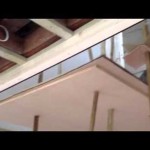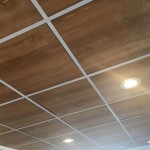How to Paint a Bonus Room with Slanted Ceilings in Revit
Bonus rooms with slanted ceilings are known for their challenging angles and complicated painting processes. However, with the right tools and techniques, you can easily achieve a professional-looking finish. Here's a step-by-step guide to painting a bonus room with slanted ceilings in Revit:
Step 1: Prepare the Ceiling
Begin by removing all furniture and fixtures from the room. Clean the ceiling thoroughly to remove any dust or debris. If the ceiling is textured, use a drywall primer to create a smooth surface. Allow the primer to dry completely.
Step 2: Create a Reference Plane
Establish a reference plane that represents the horizontal line of the room. This will help you keep the paint level while working on the slanted sections. Use a laser level or a chalk line to mark the reference plane on the wall adjacent to the ceiling.
Step 3: Apply Paint to the Flat Sections
Use a brush or roller to apply paint to the flat sections of the ceiling, including the area below the reference plane. Work in small sections and use even, overlapping strokes. Allow each section to dry before moving on to the next.
Step 4: Paint the Slanted Sections
For the slanted sections, use an angled brush or a paint pad. Hold the brush or pad perpendicular to the ceiling and apply paint in long, even strokes parallel to the slant. Use a ladder or scaffolding for stability.
Step 5: Cut In Along the Walls
Once the slanted sections are painted, use a small brush to cut in along the walls. Carefully follow the contours of the ceiling and wall to avoid any gaps. Allow the cut-in areas to dry.
Step 6: Apply a Second Coat
Repeat steps 3-5 to apply a second coat of paint. This will provide better coverage and a more durable finish. Allow the second coat to dry completely.
Step 7: Clean Up
Once the paint is dry, remove any tape or drop cloths and clean your tools. Replace the furniture and fixtures back into the room.
Tips:
- Use a high-quality paint that is specifically designed for ceilings.
- Work in a well-ventilated area and wear a respirator if necessary.
- Use a ladder or scaffolding with a wide base for stability.
- Take your time and work carefully to achieve a professional-looking finish.
By following these steps, you can easily paint a bonus room with slanted ceilings in Revit. With the right preparation and technique, you'll end up with a stunning and well-painted space.

Ceilings In Revit Tutorial Sloped Ceiling Arc Floor Integrated

Ceilings In Revit Tutorial Sloped Ceiling Arc Floor Integrated

Ceilings In Revit Tutorial Sloped Ceiling Arc Floor Integrated

6 Types Of Ceilings Modeled In Revit Tutorial Ceiling

Revit Creating Reflected Ceiling Plan

6 Types Of Ceilings Modeled In Revit Tutorial Ceiling
Ceilings And Interiors

Materials And Finishes Are Not The Same Autodesk Community
Ceilings And Interiors

Solved Paint Issue Autodesk Community Revit S
Related Posts








